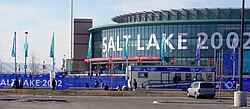
The 2002 Winter Olympics, officially the XIX Olympic Winter Games and commonly known as Salt Lake 2002, was an international winter multi-sport event that was held from February 8 to 24, 2002, in and around Salt Lake City, Utah, United States.

Salt Lake City, often shortened to Salt Lake or SLC, is the capital and most populous city of the U.S. state of Utah. It is the seat of Salt Lake County, the most populous county in the state. The city is the core of the Salt Lake City Metropolitan Statistical Area (MSA), which had a population of 1,257,936 at the 2020 census. Salt Lake City is further situated within a larger metropolis known as the Salt Lake City–Ogden–Provo Combined Statistical Area, a corridor of contiguous urban and suburban development stretched along a 120-mile (190 km) segment of the Wasatch Front, comprising a population of 2,746,164, making it the 22nd largest in the nation. With a population of 200,133 in 2020, it is the 117th most populous city in the United States. It is also the central core of the larger of only two major urban areas located within the Great Basin.

Murray is a city situated on the Wasatch Front in the core of Salt Lake Valley in the U.S. state of Utah. Named for territorial governor Eli Murray, and according to the 2020 census, Murray had a population of 50,637. Murray shares borders with Taylorsville, Holladay, South Salt Lake, Millcreek and West Jordan, Utah. Once teeming with heavy industry, Murray's industry mix has now shifted significantly toward healthcare, retail, and professional, scientific, and technical services. Known for its central location in Salt Lake County, Murray has been called the Hub of Salt Lake County. Unlike most of its neighboring communities, Murray operates its own police, fire, power, water, library, and parks and recreation departments and has its own school district. While maintaining many of its own services, Murray has one of the lowest city tax rates in the state.

West Valley City is a city in Salt Lake County and a suburb of Salt Lake City in the U.S. state of Utah. The population was 140,230 at the 2020 census, making it the second-most populous city in Utah after Salt Lake City. The city incorporated in 1980 from a large, quickly growing unincorporated area, combining the four communities of Granger, Hunter, Chesterfield, and Redwood. It is home to the Maverik Center and Utah First Credit Union Amphitheatre.
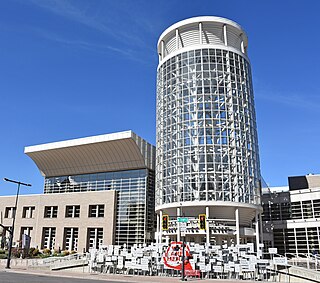
The Calvin L. Rampton Salt Palace Convention Center, more commonly known as the Salt Palace, is a convention center in Salt Lake City, Utah. Named after Utah's 11th governor, Calvin L. Rampton, the moniker "Salt Palace" was previously used by two other venues in the city.

Soldier Hollow is a cross-country ski venue located at the mouth of a hollow of the same name about 53 miles (85 km) southeast of Salt Lake City in Wasatch Mountain State Park in northwestern Wasatch County, Utah, United States. The venue was created for the 2002 Winter Olympics, and during the games it hosted the biathlon, cross-country skiing, and the cross country skiing portion of the Nordic combined events. Since hosting the Olympics, it has been developed as a cross-country skiing, tubing, and snowshoeing venue, while featuring mountain biking and golfing in the summer. On May 1, 2016, the venue operation contract transferred from the Soldier Hollow Legacy Foundation to the Utah Olympic Legacy Foundation, which owns and operates several Olympic and Paralympic legacy venues elsewhere in the state.

The Jon M. Huntsman Center is a 15,000-seat indoor arena in the western United States, on the campus of the University of Utah in Salt Lake City. It is the home of the Utah Utes of the Pac-12 Conference, the primary venue for basketball and gymnastics.

The ICCU Dome is an indoor multi-purpose athletic stadium in the western United States, located on the campus of Idaho State University (ISU) in Pocatello, Idaho. It is the home field of the Idaho State Bengals of the Big Sky Conference and sits at an elevation of 4,560 feet (1,390 m) above sea level.
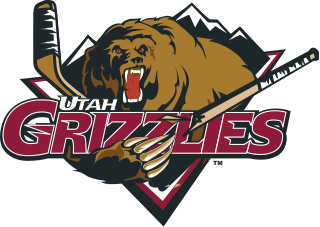
The Utah Grizzlies were an ice hockey team in the International Hockey League (IHL) and American Hockey League (AHL). They originally played at the Delta Center in Salt Lake City, before relocating to the E Center in the Salt Lake City suburb of West Valley City in 1997. After the 2004–05 season, the franchise was suspended. It was sold in 2006 and moved to Cleveland where it returned to play in 2007 as the Lake Erie Monsters. A new Utah Grizzlies franchise in the ECHL began play in 2005.
Peaks Ice Arena is an indoor ice hockey and figure skating arena in Provo, Utah, located 43 miles (69 km) south of Salt Lake City. Along with the Maverik Center in West Valley City, it was built as an ice hockey and figure skating practice venue for the 2002 Winter Olympics. It currently serves as the home of the Utah Valley University men’s ice hockey team, Peaks Youth Hockey Association, several high school teams, the Peaks Figure Skating Club, and a Learn-to-Skate USA program for beginning skaters of all ages.

The Olympic and Paralympic Cauldron Plaza is located outside the southwestern corner of Rice–Eccles Stadium on the campus of the University of Utah in Salt Lake City, Utah. During the 2002 Winter Olympics and Paralympics, the stadium was known as Rice-Eccles Olympic Stadium and hosted the Opening and Closing Ceremonies. Currently, the plaza contains the 2002 Winter Olympics cauldron surrounded by several plaques displaying photographs and information related to the 2002 Games.

The Utah Olympic Oval is an indoor speed skating oval located 14 miles (23 km) southwest of Salt Lake City, in Kearns, Utah. The Oval was built for the 2002 Winter Olympics and it hosted the long track speed skating events for the 2002 games. Inside the facility the 400 meter skating track surrounds two international sized ice sheets, and is itself surrounded by a 442-meter running track. Due to its high altitude, 4,675 feet (1,425 m), and the associated low air resistance, ten Olympic records and nine world records were set at the Oval during the 2002 games, the largest number of world records ever set at one event.

The Delta Center is an indoor venue in Salt Lake City. Opened in 1991, the arena is the home of the Utah Jazz of the National Basketball Association (NBA) and the Utah NHL team of the National Hockey League (NHL). Over the years, it has also hosted other professional sports teams including the Utah Blaze of the Arena Football League and the Utah Starzz of the Women's National Basketball Association (WNBA). With a seating capacity of 18,306 for basketball, up to 16,200 for ice hockey and indoor football, and 20,000 for concerts, the arena offers space for many kinds of events. It has 56 luxury suites and 668 club seats. During the 2002 Winter Olympics, the arena hosted figure skating and short-track speed skating competitions under the name "Salt Lake Ice Center".
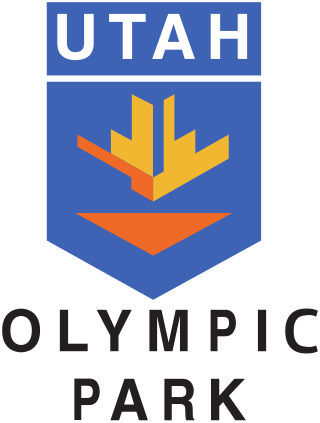
The Utah Olympic Park is a winter sports park built for the 2002 Winter Olympics, and is located in Summit County northwest of Park City, Utah, United States. During the 2002 games the park hosted the bobsleigh, skeleton, luge, ski jumping, and Nordic combined events. It still serves a training center for Olympic and development level athletes.
The Ice Sheet at Ogden, also known as the Weber County Ice Sheet, is located 35 miles (56 km) north of Salt Lake City on the campus of Weber State University in Ogden. The Ice Sheet opened in 1994 as a recreational training center for curling, ice hockey, and figure skating. During the 2002 Winter Olympics the Ice Sheet hosted the curling events. The Ice Sheet is also home to the Ogden Mustangs, a junior ice hockey team in the United States Premier Hockey League and Weber State University's men's hockey team.
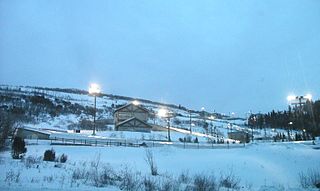
The Utah Olympic Park Track is a bobsleigh, luge, and skeleton track in the United States, located in the Utah Olympic Park near Park City, Utah. During the 2002 Winter Olympics in nearby Salt Lake City, the track hosted the bobsleigh, luge, and skeleton events. Today the track still serves as a training center for Olympic and development level athletes and hosts numerous local and international competitions. It is one of two national tracks; the other is at Mt. Van Hoevenberg near Lake Placid, New York.
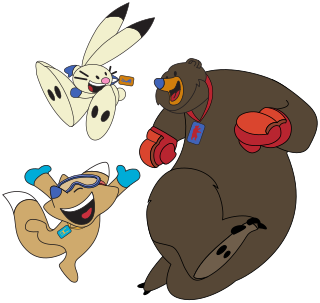
Powder, Copper and Coal were the official mascots of the 2002 Winter Olympics and Otto was the official mascot of the 2002 Winter Paralympics, both held in Salt Lake City, United States.
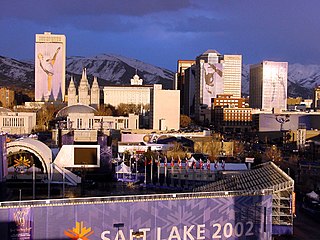
The 2002 Winter Olympic Games were held in and around Salt Lake City, United States from February 8 to 24, 2002, and the Paralympics from March 7 to 16, 2002. The sporting events were held in ten competitive venues, while non-competitive events, such as the opening ceremony, were held in six other venues. Three venues were also created for training purposes. All Olympic venues were scattered throughout Northern Utah and the Wasatch Front.

The Salt Palace was an indoor arena located in downtown Salt Lake City, Utah. Opened in 1969, the building hosted several professional sport teams, concerts, and other special events before it was closed and demolished in the 1990s to make way for the current Salt Palace Convention Center.

The Utah NHL team is a professional ice hockey expansion team that will be based in Salt Lake City. The team will compete in the National Hockey League (NHL) as a member of the Central Division in the Western Conference, and will begin play during the league's 2024–25 season. The team will play its home games at the Delta Center, the home of the Utah Jazz of the National Basketball Association (NBA), with plans being made to remodel the arena to make it more suitable for both franchises.

